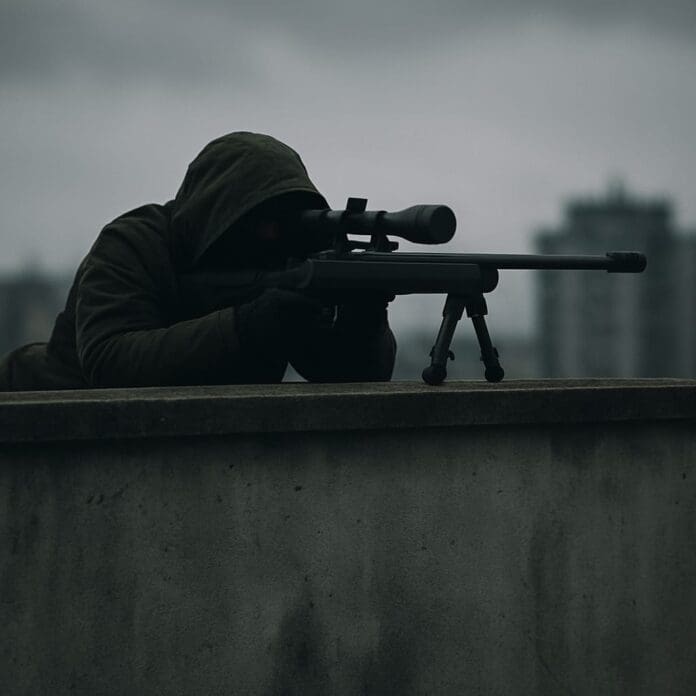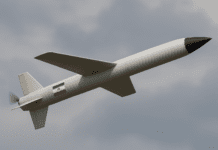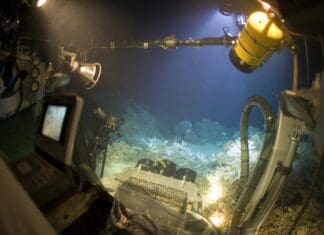This post is also available in:
 עברית (Hebrew)
עברית (Hebrew)
Written by Or Shalom
In the past decade, we have witnessed a sharp increase in assassination attempts and attacks targeting senior officials and public figures, particularly at open events and within community spaces. Incidents such as the assassination of former Japanese Prime Minister Shinzo Abe, the attempted assassination of President Donald Trump, and other events worldwide underscore the fragility of traditional VIP security models in the face of ideologically driven or personally motivated lone-wolf threats.
The combination of political polarization, easy access to basic weapons, and the ability to act swiftly makes public events especially vulnerable. Against this backdrop, the need arises to shift from conventional security rings toward innovative approaches that incorporate sensing technologies, artificial intelligence (AI), real-time crowd management, and advanced physical protection measures as part of a comprehensive strategy aimed at preventing harm to leaders and safeguarding democratic stability.
This review focuses on field-deployable technologies such as advanced sensing systems, tactical radars for detecting abnormal movement, acoustic and audio-based systems for identifying gunshots or suspicious activities, and AI-powered solutions for detecting weapons and recognizing suspicious behavior within large crowds. Environments such as densely populated gatherings and unsecured or partially secured areas naturally present complex challenges for security teams. [1]
The guiding principle behind the use of such technologies is to establish dynamic and continuous detection and control, allowing early threat identification, immediate alerting of security forces, and a swift, targeted response—without disrupting the flow of the event or diminishing the crowd’s experience.
Beyond threat detection and prevention, these systems also contribute to real-time event management and post-incident investigations through the collection, documentation, and analysis of operational data.
Risk-Based Planning as a Prerequisite for Implementing Security Technologies
Deploying advanced security technologies cannot stand alone without thorough prior planning and intelligence-based risk analysis. At this stage, various factors are assessed, including the threat profile, the level of risk to the event and individual, site characteristics (infrastructure, lines of sight, gathering points), and environmental conditions (acoustic, physical, and technological).
This analysis informs smart selection and deployment of sensing systems, such as tactical radars for open areas versus acoustic systems for enclosed venues, and their integration into different layers of defense. In other words, risk assessment is essential for the proper and effective use of these technologies and for ensuring optimal integration between technological tools, operational procedures, and on-ground personnel.
Reviewing recent events reveals that most attacks or attempted attacks occurred in areas labeled as “secured” yet lacked adequate coverage of unique threat scenarios—such as sniper fire from rooftops, lack of monitoring or control over tall buildings nearby, or hostile groupings adjacent to the event area. These failures often included underestimation of threat ranges (overwatch), poor integration between pre-event intelligence and field deployment, and a lack of technologies that could have provided early warnings—such as acoustic gunshot detectors, AI-enhanced video analytics for weapon recognition, or tactical radars for detecting unusual movement.
These lessons highlight that increased manpower alone is insufficient—there must be a multilayered approach leveraging technology for surveillance of rooftops and sight lines, real-time crowd scanning, and pre-event pattern detection.
Drones as Aerial Sensing Tools – Enhancing Situational Awareness
Recent incidents have revealed significant gaps in field situational awareness. While security efforts often focus on immediate perimeters and entry points, blind spots persist in elevated and peripheral zones. Such oversights have been evident in attacks where threats from rooftops, high windows, or nearby hostile groupings went unaddressed.
Drones can serve as a complementary aerial sensing layer, providing independent top-down views, real-time alerts on suspicious activity from potential sniper points, and operational command support across the environment. Beyond early warning, drone integration into the security setup offers a critical tactical advantage during unfolding incidents. An aerial drone provides an overview of escape routes, enables informed deployment of ground forces, and reduces crowd panic risks.
With advanced sensing capabilities—day/night cameras, thermal sensors, and AI-based analytics—drones can detect anomalies even in dense urban environments. [2] This transforms the drone from a supportive tool into a critical component of the multilayered protection strategy—aerial, ground-level, and perimeter-based. This approach creates a holistic protection system, minimizing the operating space of a potential attacker and empowering decision-makers with real-time control and event management capabilities.
An additional capability enhancement lies in the Drone as a First Responder (DFR) concept. In cases of gunfire, attempted assassination, or hostile gathering, a drone launched immediately to the area provides critical situational awareness even before ground forces arrive, enabling tracking of escape routes, suspect identification, and guidance for intervention teams.
A case study of the Charlie Kirk assassination illustrates this potential: a drone could have tracked the shooter’s escape route, documented the event in real time, and provided security forces with a top-down view of both the crowd and the suspect’s movements [3] —dramatically reducing response times, increasing certainty, and enhancing the ability to neutralize the threat in real time. Drones may also serve as platforms for delivering public announcements or non-lethal countermeasures to slow down an assailant.
This capability holds significant potential for bridging critical time gaps, improving decision-making by commanders, and maintaining operational continuity from the attack phase to control and re-establishment of order.
In the July 2024 golf course assassination attempt, suspect Ryan Routh positioned himself at an elevated spot with a sniper rifle. A Secret Service agent identified the weapon and fired at him, but the suspect escaped, entered a vehicle, and fled. [4] Only after a chase lasting several hours was he eventually located and apprehended based on vehicle identification.
This case illustrates the operational gap that a DFR drone could have filled. An immediate drone deployment over the scene would have allowed continuous tracking of the suspect’s escape, live data transmission to command centers, and visual documentation to support ground forces. A drone would have provided full situational awareness, shortened the critical gap between identification and response, and prevented loss of initial contact with the shooter. Thus, DFR functions not only as a detection tool but as an operational asset crucial for maintaining command and event management continuity.
Implementing Security Technologies to Address Mass Crowd Challenges
In the context of large crowds, VIP protection faces a complex range of threats: from lone wolves armed with concealed weapons blending into the crowd, to close-range gunfire, sniper attacks from rooftops, and even the use of hostile drones to deliver payloads or create chaos.
In addition, indirect threats such as concealed weapons in bags or clothing, hostile group formations near the venue, and others also pose challenges.
An effective response requires multi-layered integration of diverse and independent technologies, including:
- Advanced sensing systems: tactical radars, thermal sensors, EO/IR cameras
- AI-based solutions: for abnormal behavior detection and weapon identification
- Counter-drone systems (C-UAS)
- Smart crowd management platforms enabling controlled dispersal and real-time oversight
The combination of sensors, analytics, and rapid response creates continuous situational awareness, significantly reducing the attacker’s advantage of surprise. [5]
To fully realize these capabilities in crowded environments, multi-dimensional integration is needed between field tools, analytical systems, and control centers. At entrance points, passive weapon scanners and RF sensors can detect hidden electronics, while AI cameras spot suspicious behavior before reaching the central area. [6] Within the event itself, deploying EO/IR cameras and thermal sensors ensures continuous detection, even under challenging lighting or in dense crowds.
Additionally, advanced acoustic detection systems can identify and pinpoint gunfire (from a handgun or rifle) with meter-level accuracy and transmit real-time data to control centers for immediate action. [7]
Above all, the deployment of surveillance drones and DFR (as previously mentioned) creates an aerial perspective, breaking blind spots, detecting early sniper threats, and managing instant response in emergencies.
Simultaneously, smart crowd control systems—ranging from announcements to dynamic simulations of evacuation routes—ensure operational control and reduced panic. [8]
This creates a multi-layered technological defense apparatus—encompassing detection, analytics, control, and response—capable of addressing a wide array of threats and ensuring the safety of both the protected individual and the public, even in the most challenging public arenas.
It is clear that the future of VIP protection at open public events lies in the smart integration of advanced technologies with innovative security methodologies. The accumulated experience from past assassination attempts reveals that deploying personnel or relying solely on traditional models is no longer sufficient. A multi-layered approach, combining advanced sensing, smart analytics, and rapid response capabilities, is essential.
The combination of tactical radars, EO/IR systems, acoustic gunshot detectors, surveillance drones and DFR, alongside AI-powered behavioral monitoring and smart crowd control, creates operational continuity that enables real-time threat detection, attack prevention, and seamless continuation of the event without harm to the VIP or the public.
This represents the essential shift from reactive response to proactive command and control, delivering a decisive operational advantage in a highly challenging security landscape.
The author is a security, cyber and HLS technology expert and consultant to government ministries and defense industries. He holds a master’s degree, as well as civil and national qualifications in the realm of HLS and Cyber Security. He has experience in consultation and business development for security companies and groups in matters of planning and building defense, innovation and security technology, exercises, and training in security and cyber.
[1]https://www.youtube.com/watcנh?v=5WdyBRXm5JM
[2] https://i-hls.com/he/archives/127873
[3] https://www.washingtonpost.com/investigations/2025/09/11/charlie-kirk-shooting/
[4]https://abcnews.go.com/Politics/timeline-apparent-assassination-attempt-donald-trump-golf/story?id=113730494 , https://www.youtube.com/watch?v=5WdyBRXm5JM
[5] https://i-hls.com/he/archives/127873
[6] https://www.sciencedirect.com/science/article/abs/pii/S1574013723000795
[7]https://www.sciencedirect.com/science/article/abs/pii/S1355030624000984


























